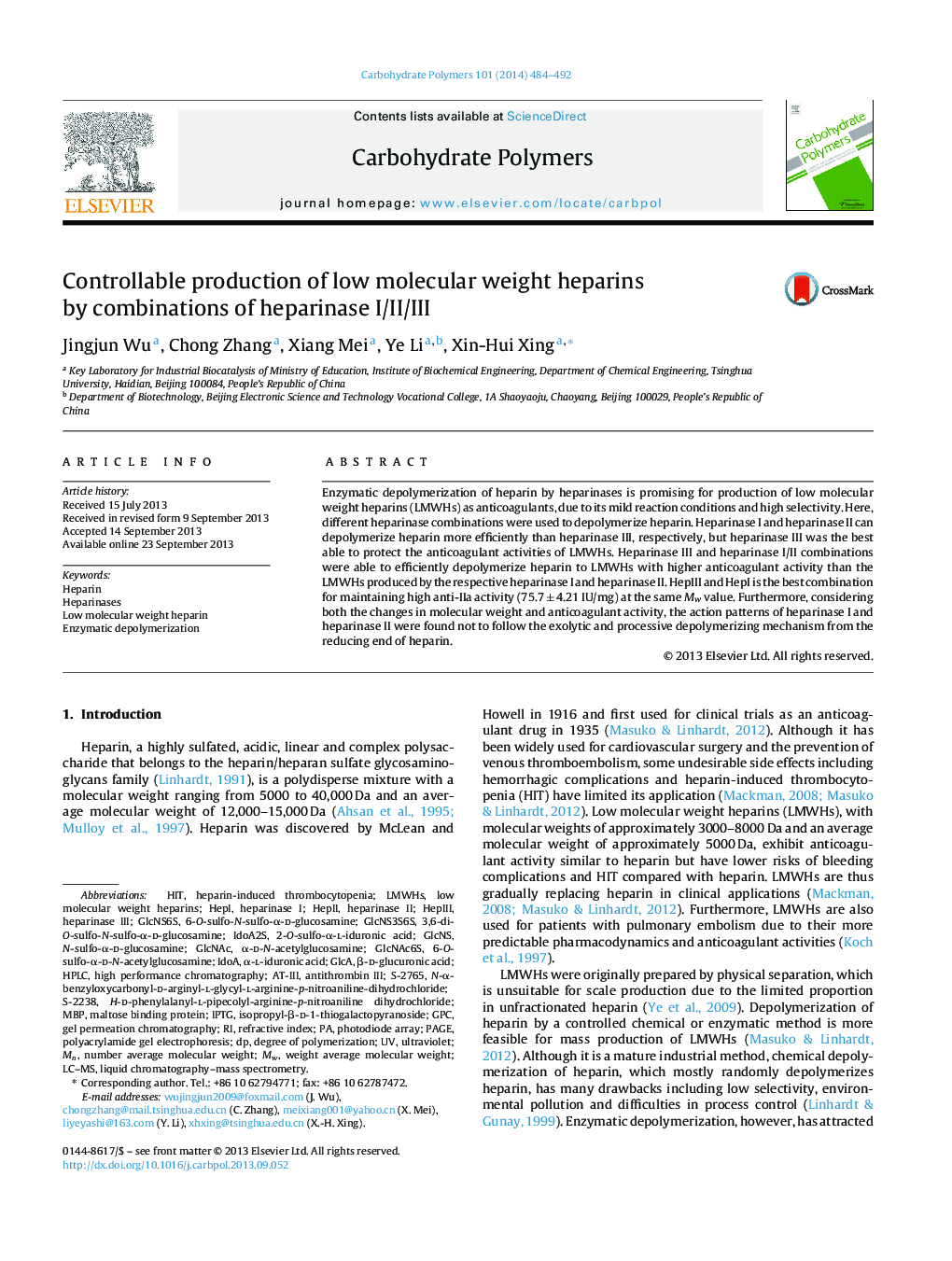| Article ID | Journal | Published Year | Pages | File Type |
|---|---|---|---|---|
| 7792907 | Carbohydrate Polymers | 2014 | 9 Pages |
Abstract
Enzymatic depolymerization of heparin by heparinases is promising for production of low molecular weight heparins (LMWHs) as anticoagulants, due to its mild reaction conditions and high selectivity. Here, different heparinase combinations were used to depolymerize heparin. Heparinase I and heparinase II can depolymerize heparin more efficiently than heparinase III, respectively, but heparinase III was the best able to protect the anticoagulant activities of LMWHs. Heparinase III and heparinase I/II combinations were able to efficiently depolymerize heparin to LMWHs with higher anticoagulant activity than the LMWHs produced by the respective heparinase I and heparinase II. HepIII and HepI is the best combination for maintaining high anti-IIa activity (75.7 ± 4.21 IU/mg) at the same Mw value. Furthermore, considering both the changes in molecular weight and anticoagulant activity, the action patterns of heparinase I and heparinase II were found not to follow the exolytic and processive depolymerizing mechanism from the reducing end of heparin.
Keywords
GPCAT-IIIS-2238Heparinase IIdoAGlcALMWHsisopropyl-β-d-1-thiogalactopyranosidePAGEEnzymatic depolymerizationGlcNAcIPTGMBPLC–MSphotodiode arrayantithrombin IIIUltravioletHITpolyacrylamide gel electrophoresisHeparin-induced thrombocytopeniadegree of polymerizationRefractive indexliquid chromatography–mass spectrometryHeparinLow molecular weight heparinlow molecular weight heparinsWeight average molecular weightNumber average molecular weightmaltose binding proteinHigh performance chromatographyHPLCGel permeation chromatography
Related Topics
Physical Sciences and Engineering
Chemistry
Organic Chemistry
Authors
Jingjun Wu, Chong Zhang, Xiang Mei, Ye Li, Xin-Hui Xing,
